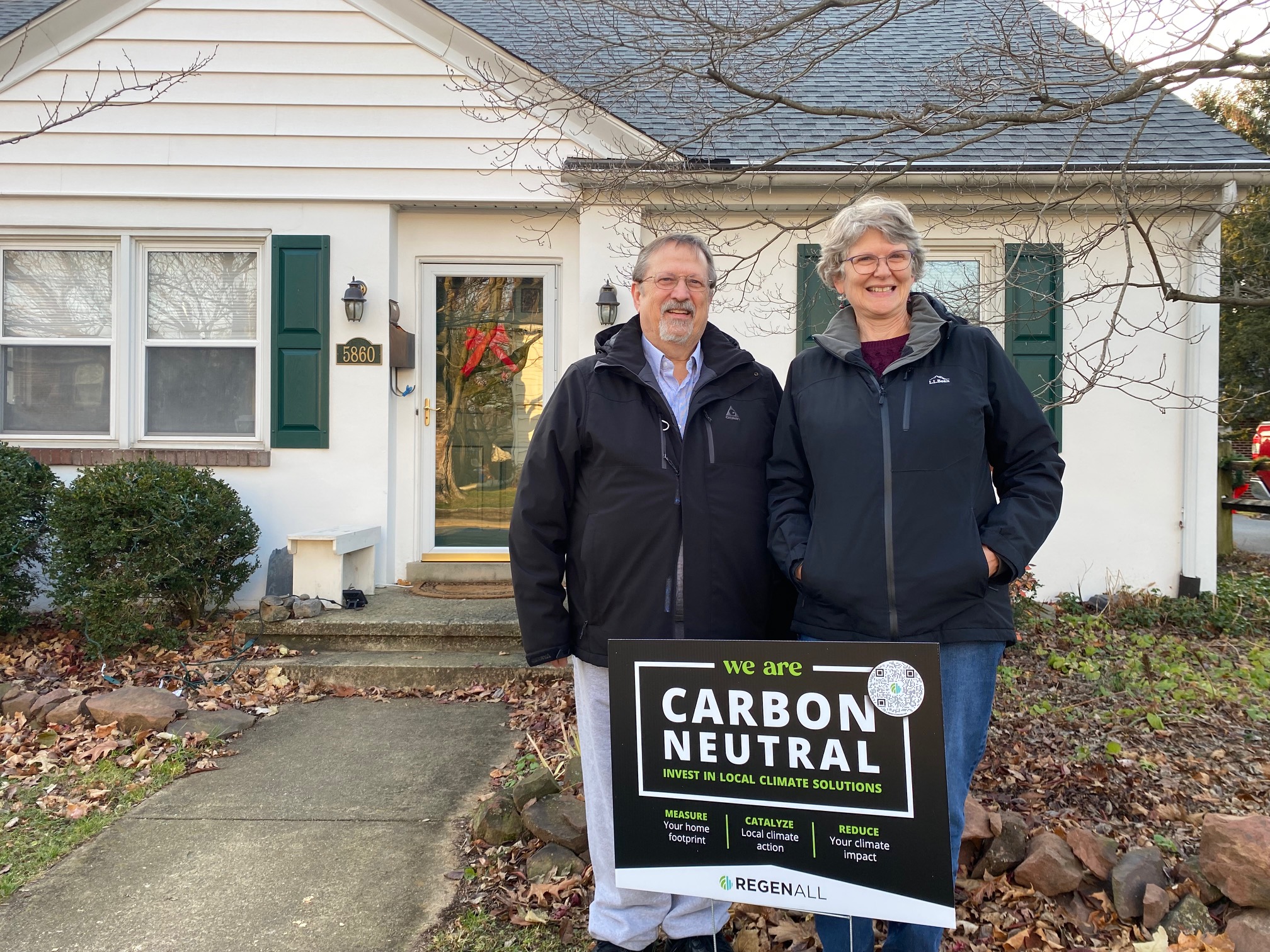Reaching zero carbon emissions is very difficult for most people. Our modern world is built around activities, services and products that all produce carbon emissions. A carbon offset allows you to counteract your current impact by investing in projects that are directly reducing future emissions.
The cost of a carbon offset is set based on the average cost of sequestering or reducing 1 ton of CO2-equ. When you offset your carbon footprint through RegenAll you currently pay a rate of $75/ton CO2-equ. This rate is subject to change based on the actual realized cost of local projects.
The idea behind an offset is to provide a temporary mechanism to bridge the gap between a household’s current emissions and a future goal of zero emissions. In this interim state, it is very likely that you will continue to have some carbon emissions that you cannot immediately eliminate. An offset allows you to make a one-for-one trade: you continue to take that cross country flight to see your loved ones for the holidays (which produces carbon emissions) so you pay a set amount to a fund that is then used to implement projects to reduce future emissions by the same amount of carbon from your flight.
An offset is not a perfect mechanism and by no means is it a substitute for continuing to find ways to reduce your footprint through lifestyle changes. Given that without immediate action at all levels of society, we are on track for a >3ºC change in global temperatures, the time lag of an offset makes it an imperfect and insufficient mechanism.
However, similar to the saying “all models are flawed, but some are useful”, the offset mechanism is flawed but still useful. A carbon offset helps create a important new funding source to invest in local climate projects that have a direct benefit to your local community.


